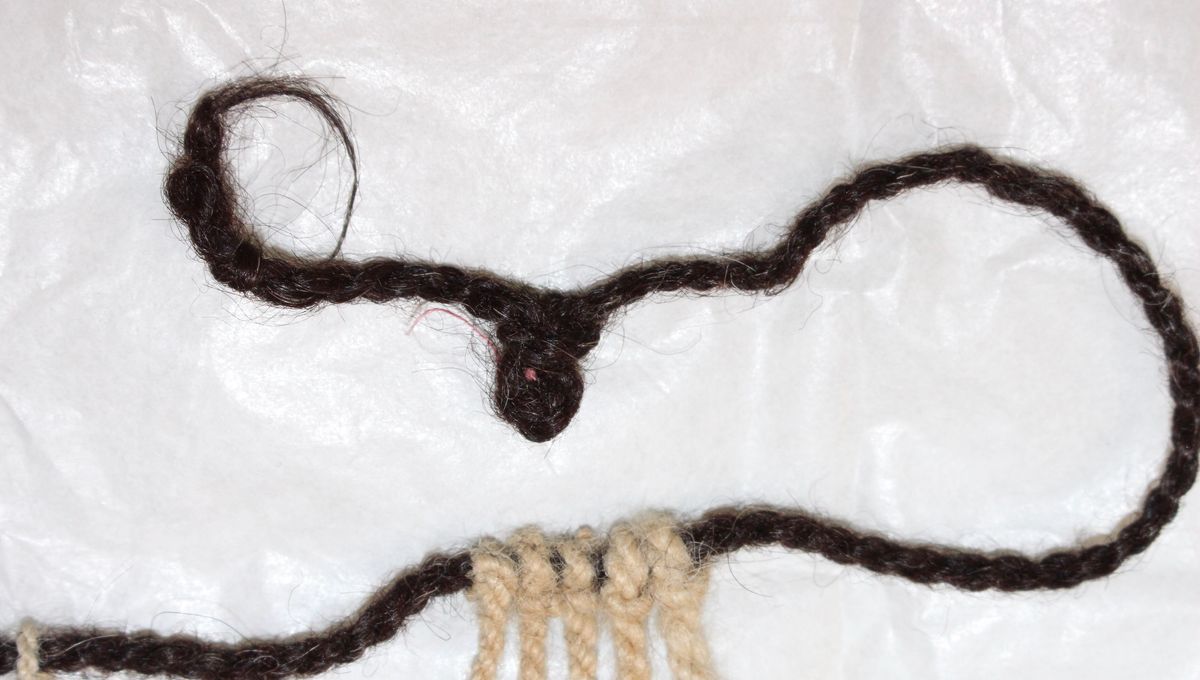
A 500-year-old Inca document made of alpaca wool and human hair was made by an unknown individual of low social status, shattering the common belief that only high-ranking imperial officials knew how to produce these strange thread-based records. Known as a khipu, the artifact forms part of a “proto-writing” tradition that was widespread in the Andes until the arrival of the Spanish conquistadores, and which persisted in isolated highland villages until the 20th century.
However, because most known examples of Inca-era khipus come from graves that were looted before archaeologists had a chance to excavate them, it’s currently impossible to link these relics to any specific khipukamayuqs – or khipu makers. As a result, historians remain largely in the dark over who produced the stringy objects or how to read them.
In a new study, researchers performed radiocarbon dating of the camelid fibers in a khipu of unknown origin, discovering that it dates back to around 1498 CE.
“There’s this idea that Inca khipus were made of cotton and post-Inca khipus are made of animal fibers,” said study author Dr Sabine Hyland from the University of St Andrews. “Well, this khipu was camelid fiber, so I went around telling people, ‘oh look, here’s a modern khipu – it’s from the 19th century at the earliest,” she told IFLScience.
“So when we got the radiocarbon date and it was Inca, that was the first shock,” said Hyland. Yet an even bigger surprise was still to come.
While little is known about Inca khipu production, colonial-era reports suggest that only males from elite families were educated in the creation of these ancient documents, which used a series of tassels and knots to record information. Often, these upper-class khipukamayuqs would “sign” their khipus by weaving a few strands of their own hair into the main cord.
The study authors therefore decided to perform isotopic analysis on a 104-centimeter (41-inch) long human hair that was incorporated into the khipu. In doing so, they expected to find evidence that this individual consumed a high-status diet consisting of meat washed down with copious amounts of maize beer – or chicha.
“It is difficult to imagine a scenario where an official khipukamayuq could have refrained from consuming large amounts of maize in the form of beer,” write the study authors. Unexpectedly, however, results showed that the hair’s owner ate very little meat or maize, and instead survived mainly on tubers and greens. In Inca times, this kind of diet would have been befitting of a low-ranking commoner.
“I was stunned when I got the results back,” said Hyland. “I said, ‘What? This person’s eating potatoes and legumes?!’”
Ultimately, these findings show that whoever made this khipu was a lowly commoner, proving that this intricate form of record-keeping was not exclusive to the elites of Inca society. According to Hyland, the level of detail and intricacy in the woven threads suggests that this particular individual was clearly highly skilled, despite his or her lack of political clout.
“The more I looked at it, the more I realized it’s actually very beautiful,” she said. “There are so many details in how the cords are made, like little fine braids and ornamentation. [At first] I thought ‘wow, this must be royal or something’.”
Unfortunately, with no concrete knowledge regarding how to read khipus, it’s currently unclear exactly what kind of information is written into these ancient threads. Speculating on the khipu’s content, however, Hyland said, “I suspect that it might be recording ritual offerings to the various gods.”
The study is published in the journal Science Advances.
Source Link: Mysterious Inca String “Writing” System Was Surprisingly Used By Commoners As Well As Elites